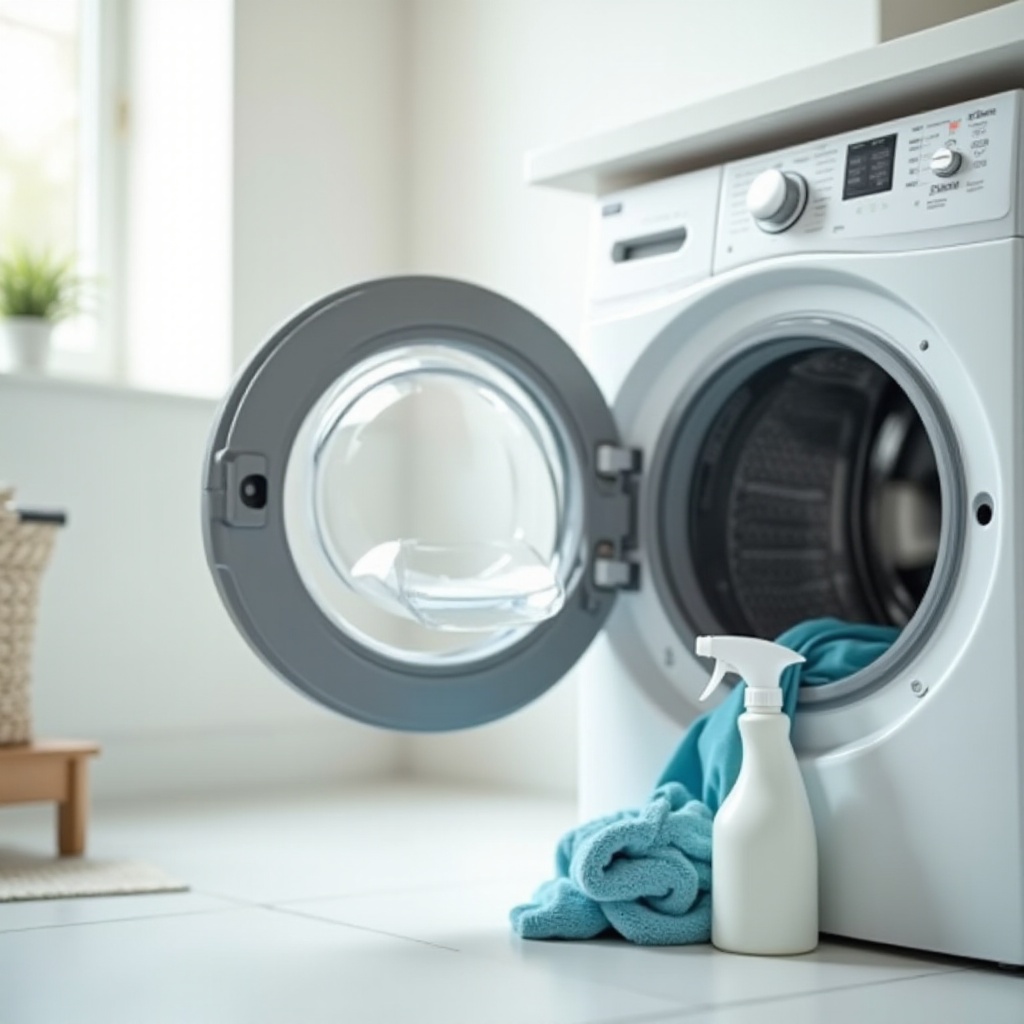Introduction
Maintaining a clean washer is crucial to ensure your clothes come out fresh every time. A sanitized washer prevents foul odors, mold, and mildew, contributing to a healthier laundry routine. Without regular sanitization, your washer can harbor bacteria, affecting not only the performance of the machine but also the quality of your laundry and overall health. This comprehensive guide will walk you through the entire process of sanitizing your washer and provide tips for maintaining its cleanliness.

Understanding the Need to Sanitize Your Washer
Keeping your washer clean is vital for several reasons. Over time, soap scum, dirt, and residues from detergents and fabric softeners build up in the drum, door seal, and detergent dispensers, leading to various issues:
- Odors: Unpleasant smells can develop due to mold and mildew.
- Mold and Mildew: These thrive in moist, warm environments, such as an unclean washer, posing health risks.
- Reduced Efficiency: A dirty washer may not perform optimally, affecting how clean your clothes get.
It's recommended to sanitize your washer once a month to avoid these problems. However, if you notice any foul smell or see visible signs of mold, it's best to clean it immediately.

Step-by-Step Process to Sanitize a Washer
Sanitizing your washer involves several steps to ensure every part of the machine is thoroughly cleaned. Here's a detailed process to follow:
- Preparing Your Washer for Cleaning
- Empty your washer, removing any loose items left behind.
Gather cleaning supplies: white vinegar, baking soda, a microfiber cloth, and an old toothbrush.
Cleaning the Detergent Dispenser
- Remove the detergent dispenser from the washer.
- Soak it in warm, soapy water for about 10 minutes.
Use a toothbrush to scrub away any residue, then rinse and dry it before placing it back.
Cleaning the Washer Drum
- Pour two cups of white vinegar into the drum.
- Run the hottest cycle available. Vinegar disinfects and breaks down built-up grime.
- Once finished, sprinkle half a cup of baking soda in the drum.
Run another hot cycle to further clean and deodorize.
Cleaning the Washer Door and Seals
- Wipe down the washer door with a vinegar-soaked cloth.
- Use the toothbrush to scrub the seal, paying close attention to any mold or mildew spots.
Dry the seal completely to prevent future mold growth.
Running a Sanitize Cycle
- If your washer has a sanitize cycle, run it to ensure any remaining bacteria are eliminated.
- This cycle typically uses extra-hot water to kill germs effectively.
Natural vs Chemical Cleaning Agents: What's Best?
Choosing between natural and chemical cleaning agents can be confusing. Each has its advantages and disadvantages.
Pros and Cons of Natural Cleaning Solutions
Benefits:- Safer: Natural agents like vinegar and baking soda are non-toxic and safe for you and the environment.- Cost-effective: Usually cheaper than commercial cleaners.
Drawbacks:- Effectiveness: Sometimes, natural cleaners may not be as powerful against tough stains and buildup.
Pros and Cons of Chemical Cleaning Solutions
Benefits:- Powerful: Effective against severe mold, mildew, and residues.- Convenient: Ready-to-use products save time.
Drawbacks:- Toxicity: Potentially harmful chemicals can pose risks to health and the environment.
Recommended Products and Homemade Solutions
- Natural: Mix one cup of vinegar with a few drops of tea tree oil to combat mold.
- Chemical: Products like Affresh Washer Cleaner tablets are widely recommended for their efficacy.

Preventative Measures to Keep Your Washer Clean
Maintaining a clean washer isn't just about deep cleaning; it's also about preventing dirt buildup.
Post-wash Habits for Maintaining a Clean Washer
- Leave the Door Open: After each use, leave the washer door open to allow air to circulate and dry out the drum.
- Wipe Down: Frequently wipe the drum and the door seals after each wash.
Tips for Reducing Mold and Mildew Buildup
- Use the Right Amount of Detergent: Excess detergent can lead to residue buildup.
- Choose High-Efficiency Detergents: These are designed to produce fewer suds, reducing residue.
How to Prevent Odors in Your Washer
- Regular Cleaning Cycles: Run a hot wash cycle with vinegar monthly.
- Avoid Overloading: Overloading can prevent thorough cleaning, leading to residue and odors.
Conclusion
Sanitizing your washer is essential for maintaining its performance and ensuring your laundry is genuinely clean. By following the steps outlined above and incorporating preventative measures, you can keep your washer in pristine condition, free from odors, mold, and mildew. Regular maintenance will not only extend the life of your washer but also result in fresher, cleaner laundry.
Frequently Asked Questions
How often should I sanitize my washer?
Sanitize your washer monthly to prevent mold, mildew, and odors from developing. If you notice any issues sooner, such as foul smells or mold growth, sanitize immediately.
Can I use vinegar to clean my washer?
Yes, vinegar is an effective natural cleaner. It helps to disinfect, remove odors, and break down buildup inside your washer. Use two cups of white vinegar and run a hot cycle for best results.
What are the signs that my washer needs sanitizing?
Look out for unpleasant odors, visible mold or mildew in the drum or door seal, and residue or buildup in the detergent dispenser. These signs indicate that your washer needs a thorough sanitizing.
